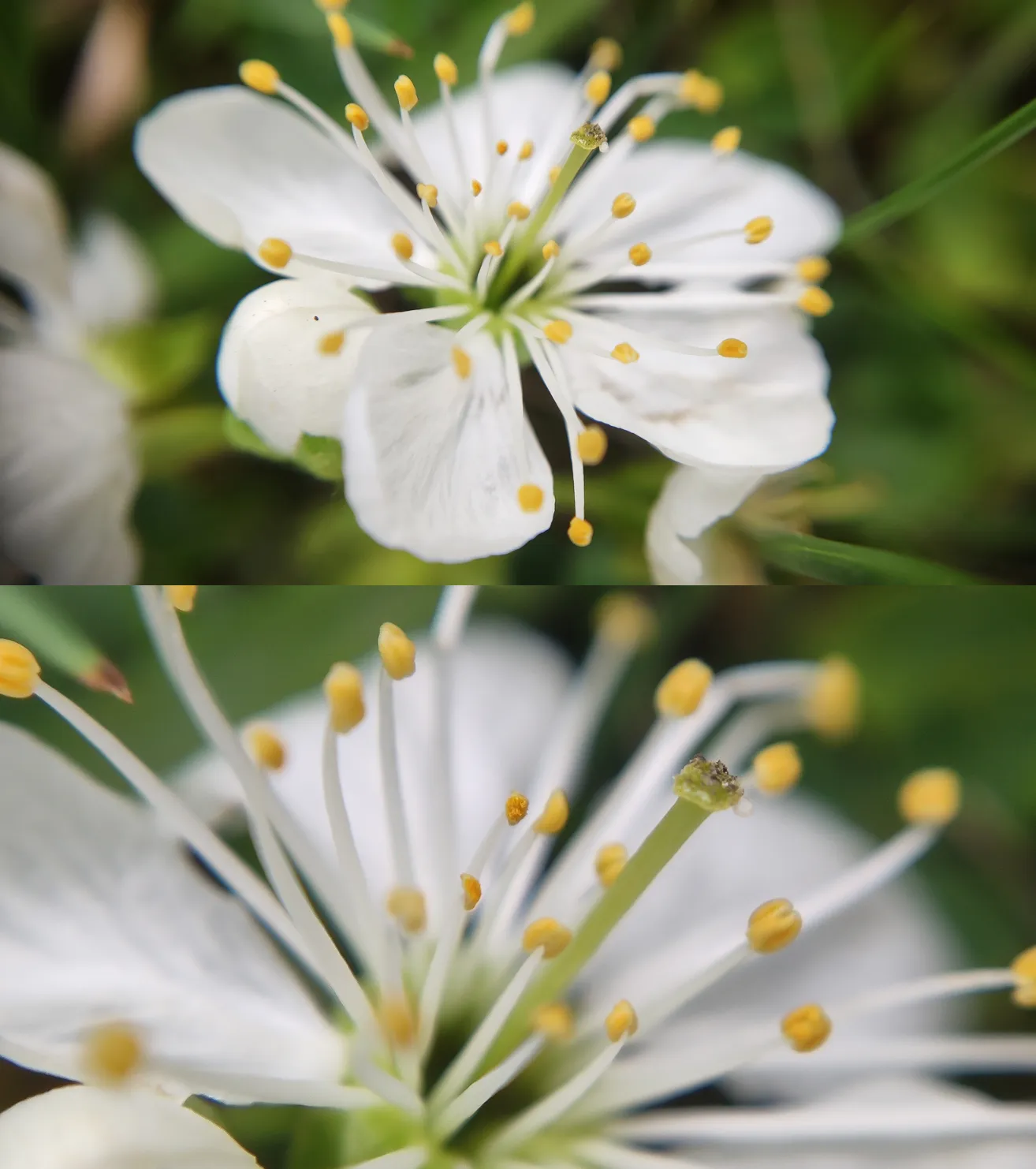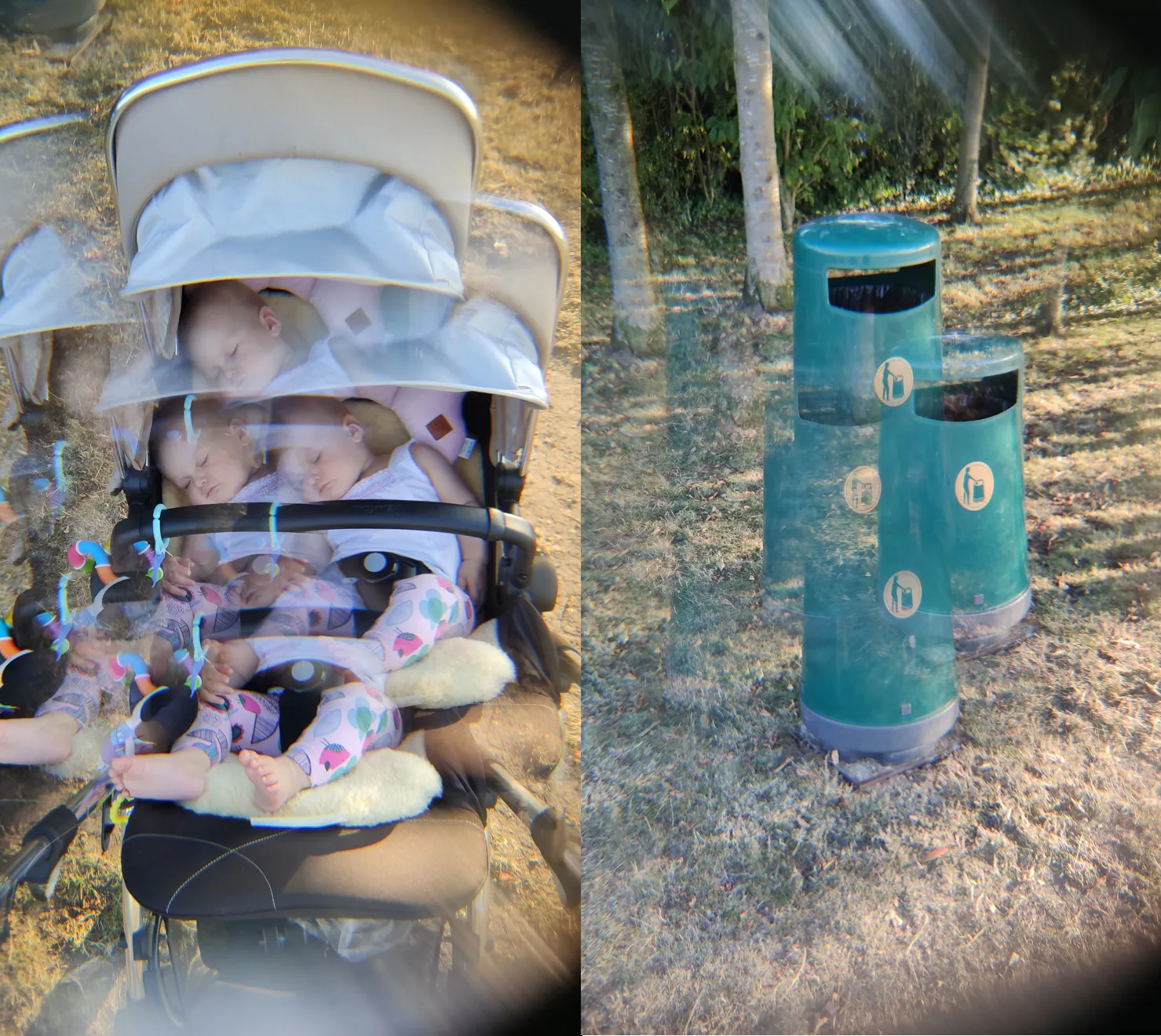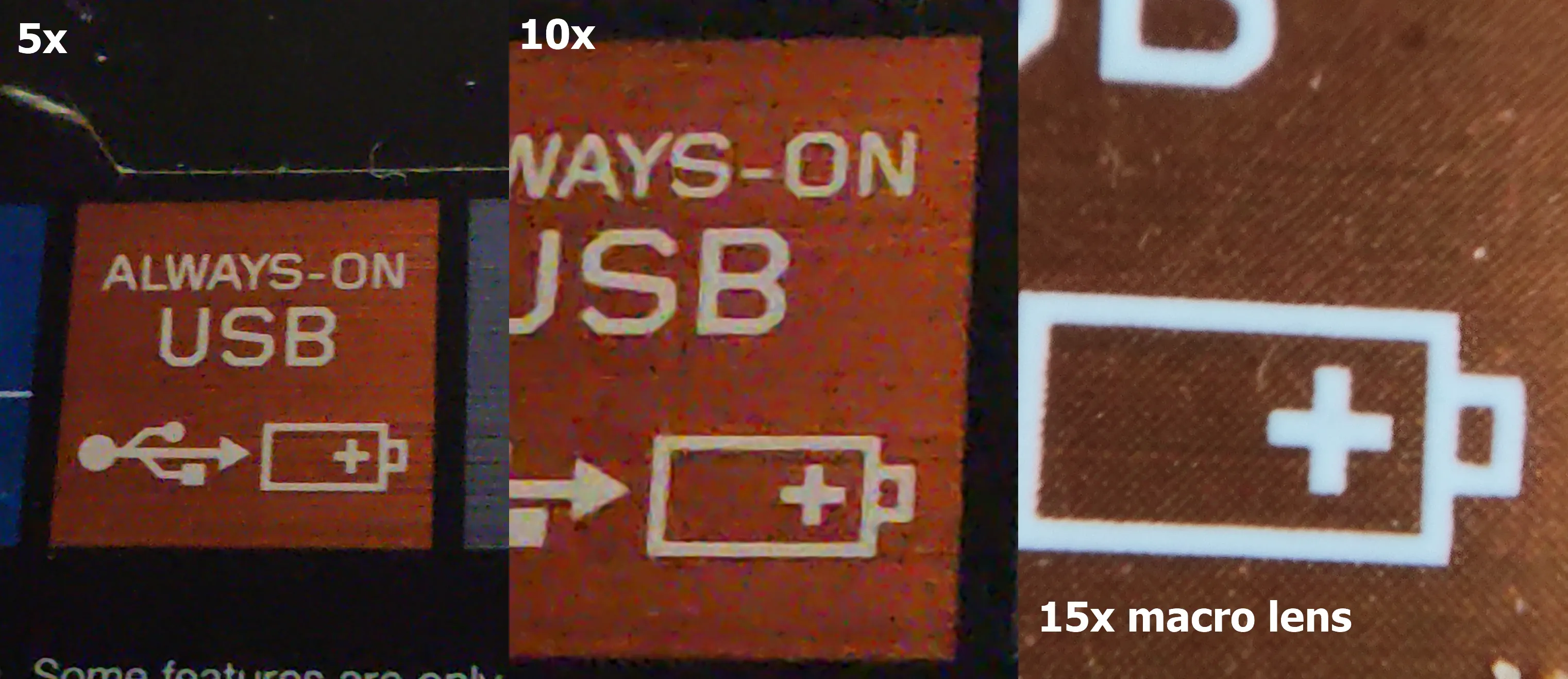Nowadays smartphones are able to take good pictures. I know it, after testing both Xiaomi devices Mi 8 and Mi 9. You have your own opinions, once you owe another model. My examples will come from these 2 devices, which I had occasion for the rough description. Among quite a few image options in these models, there are zoom and macro types. As everyone knows, these modes aren’t really useful due to the lack of a decent optical lens built up in the model. The majority of smartphones are equipped with 2x optical zoom only. In this case, each option of bigger magnification (eagerly offered by providers) is purely digital, which leads to huge quality deterioration caused by excessive sharpening.
Apart from zoom and macro, good attention can be stuck to the wide-angle options, which also aren’t perfect in some devices, like Xiaomi Mi 9.
In this article, I would like to discuss something like an alternative to these problems, for users who desire more, than standard image features provided by the devices and answer whether is it worth bothering or not.
The first thing, that came to my mind was: If I can equip my DSLR camera with random lenses, can I do the same with my smartphone then?
I found, that obviously YES 🙂
There are a lot of cell phone camera lens kits available for sale. You just need to visit some webshop i.e. Amazon and search for them. The prices differ, although there are a lot of cheaper options. The cheapest one you can get for even around 10-15GBP.
I bought my cell phone lens kit for 25GBP. This kit is fully equipped with different kinds of lenses, possible to attach to your smartphone (Pic. 1).
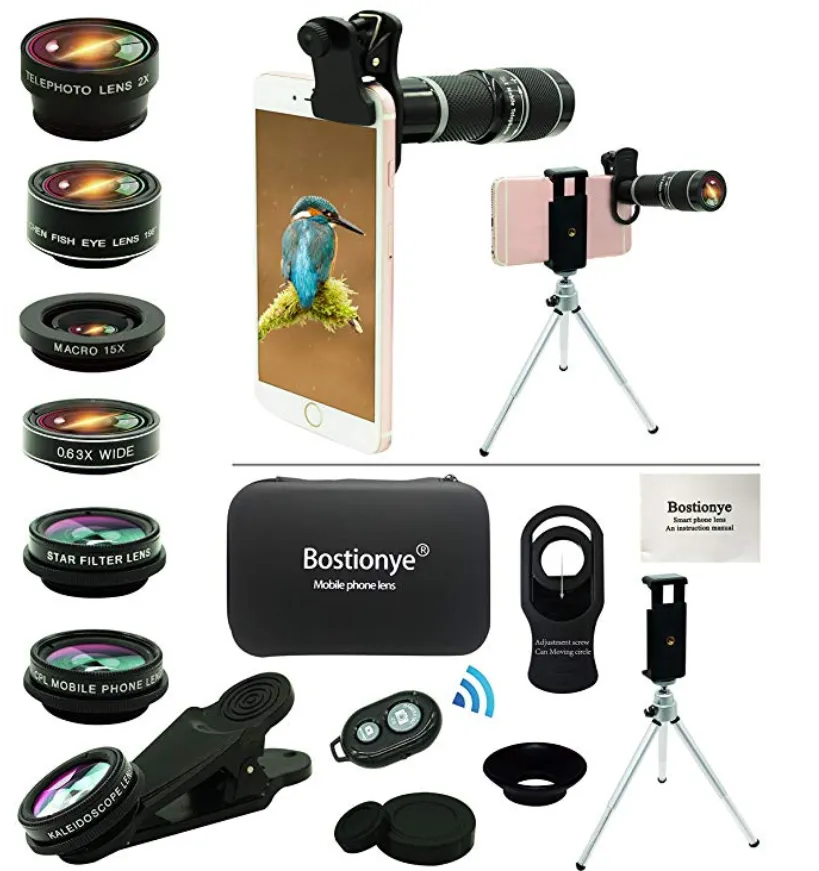
I picked up the Bostionye company, quite randomly. Because the price wasn’t a deterrent I thought, why not try? They have also a kit with a 20x telephoto lens as shown above.
I would like to describe this Cell Phone Camera Lens Kit below, all elements one by one. I have done my tests on 3 smartphones: Samsung Galaxy S5, Xiaomi Mi 8, and Xiaomi Mi 9. The best test has been done with the recent one – Xiaomi Mi 9.
CELL PHONE LENS KIT WITH SAMSUNG GALAXY S5
Samsung Galaxy S5 was my first good smartphone, which I bought around 3 years ago. The first lens, which I used straight after unpacking this kit was the 12x zoom. Unfortunately, the first impression wasn’t nice. I found, that the image given is really distorted. Only the very middle of the screen was looking nice (Pic. 2).
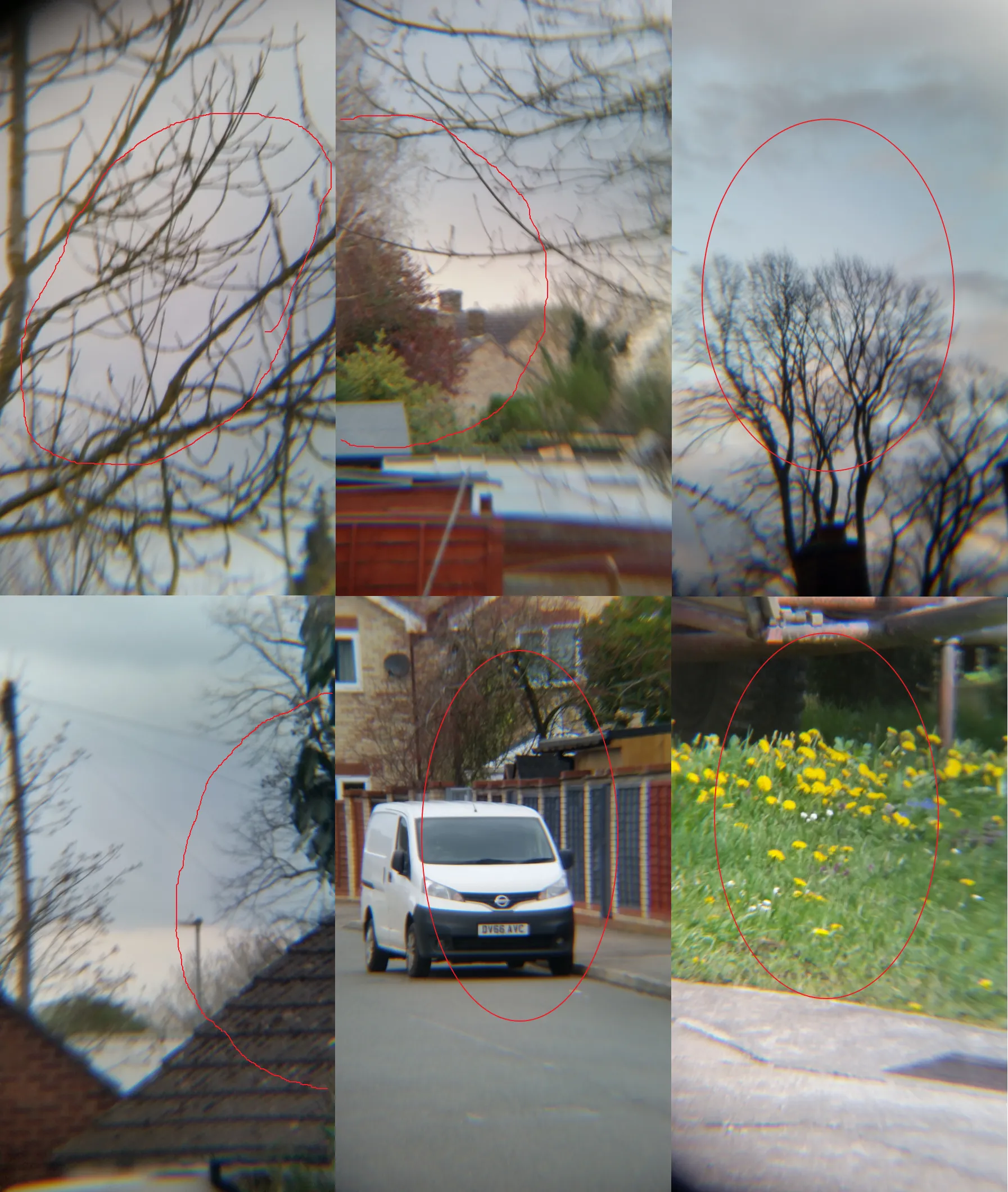
So, the first conclusion states, that you must keep your lens possibly as close as possible to your cellphone camera. The lens should be as centered as possible, otherwise, your image won’t be good at all.
Unlike the zoom lens, the macro is far better. The rule of centering the lens against the cellphone camera is still valid, but distortion isn’t as much expressed as in the zoom case (Pic. 3). A default macro enlargement is 15x.
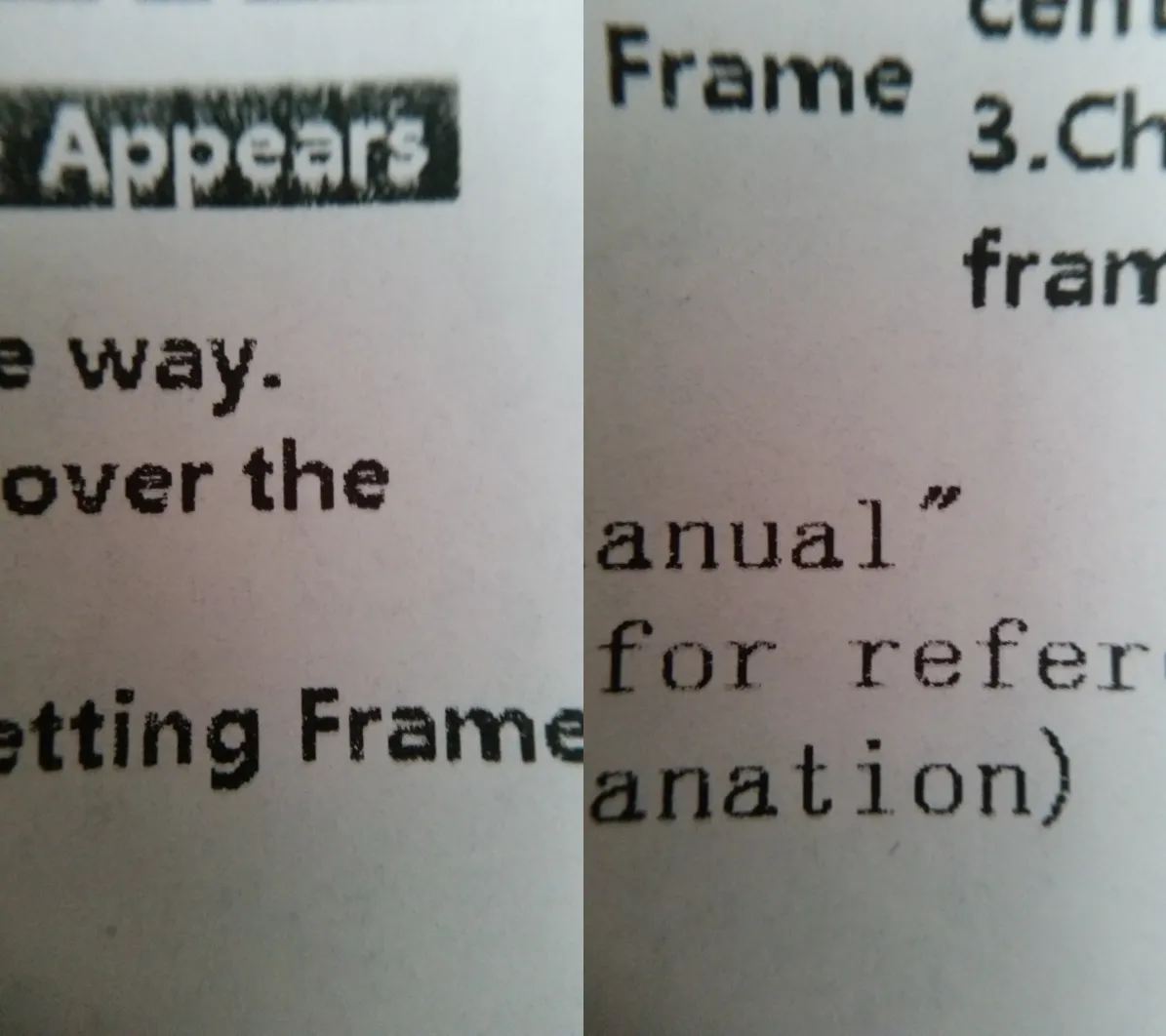
Apart from zoom and macro lenses, which I used a lot, to be honest, there are another few lenses: 198° fisheye, 2x telephoto lens, kaleidoscope lens, CPL mobile phone lens, 0.63x wide, and star filter lens. With Samsung Galaxy S5 I tested only the fisheye (Pic. 4) and kaleidoscope (Pic. 5).
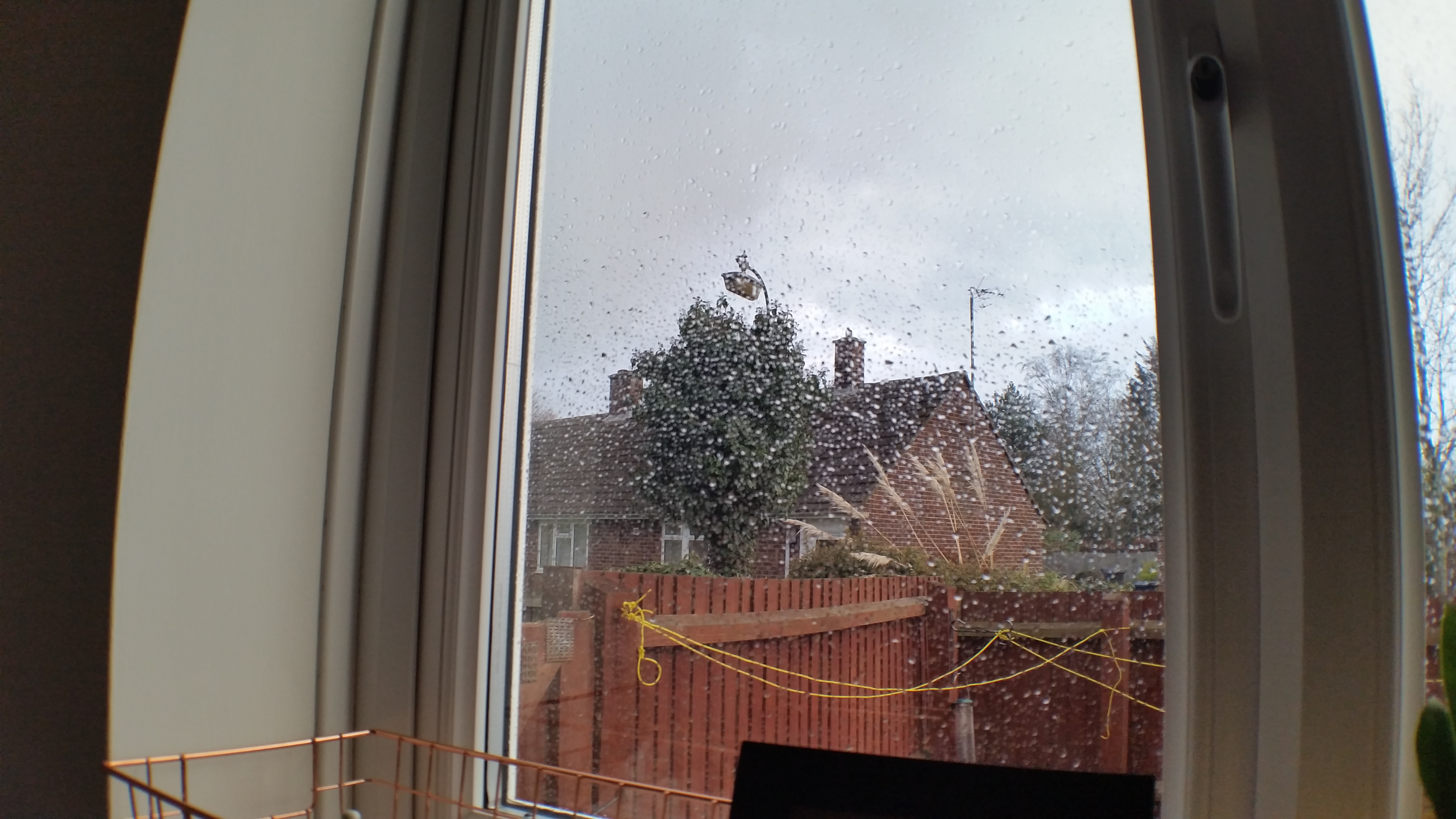
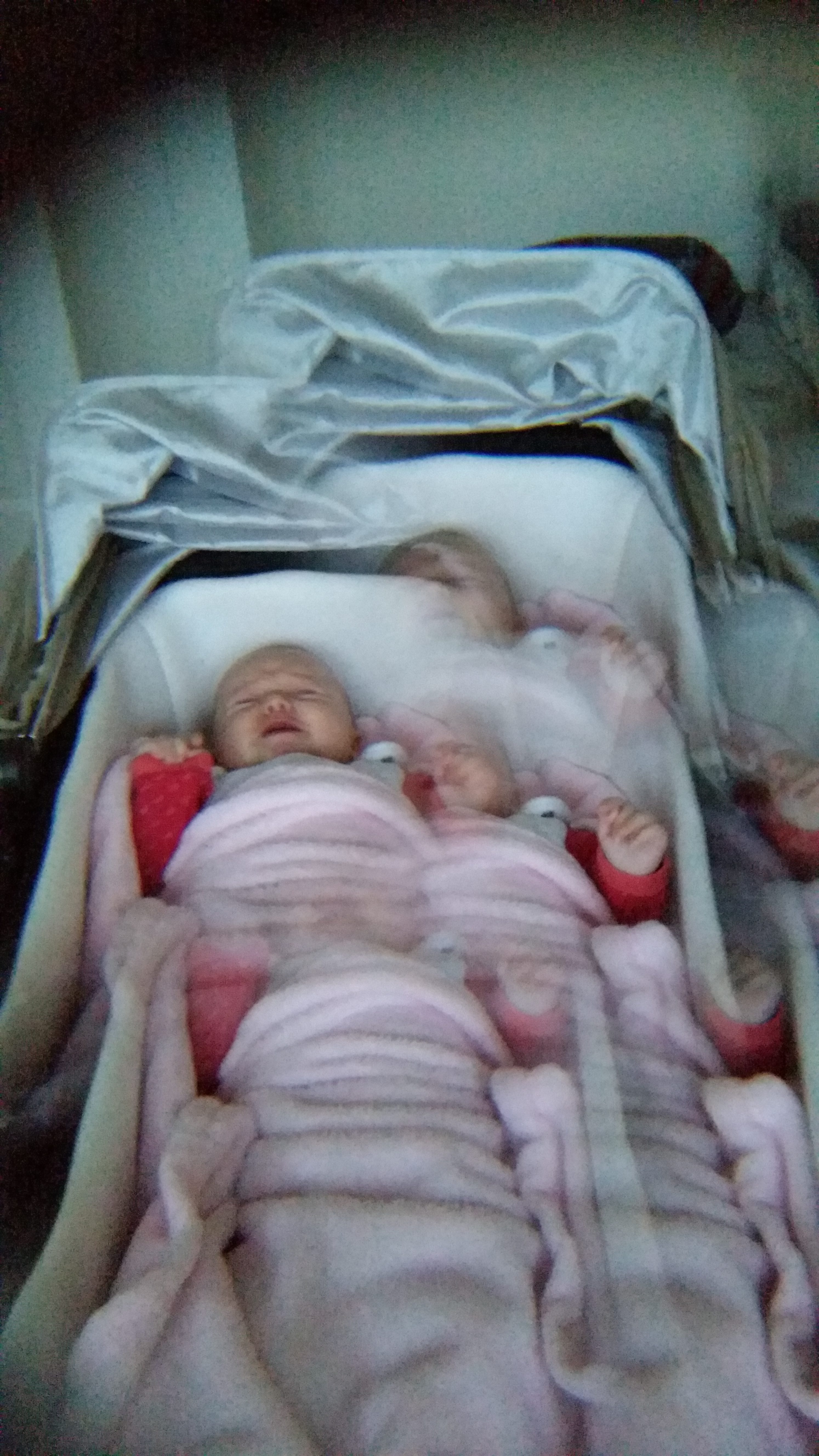
In all cases, you must center this lens on your phone camera. Otherwise, besides the poor sharpness, you will get a dark edge on your screen. More tests have been carried out with Xiaomi devices.
CELL PHONE LENS KIT WITH XIAOMI MI 8
Using the Xiaomi Mi 8 I checked the quality of the following Cell Phone Kit Lens regarding the camera options featured by this device. In this device, I tested only a 2x and 12x telephoto lens. I cannot hide, that the telephoto lens is one of my favourite, because of the far-reaching views, which I really like. Regarding the Xiaomi Mi 8 I used only 3 basic photo modes: normal photo, 2x zoom, and panorama.

The situation looks the same as in the Samsung Galaxy S5. In both cases, I attached the telephoto lens quickly, without further adjustments. As a result, the focus response was really poor. There are pictures, which are blurry even in the middle, where the image should be the best. The principle is, that when closer to the view edge, then the image is getting poor. The very center of the enlargement tool is always the best and can bring a decent view once your autofocus response is fine (which you can set manually also). The image looks slightly better when using only a 2x telephoto lens (Pic. 9), but it’s not the same, unfortunately.
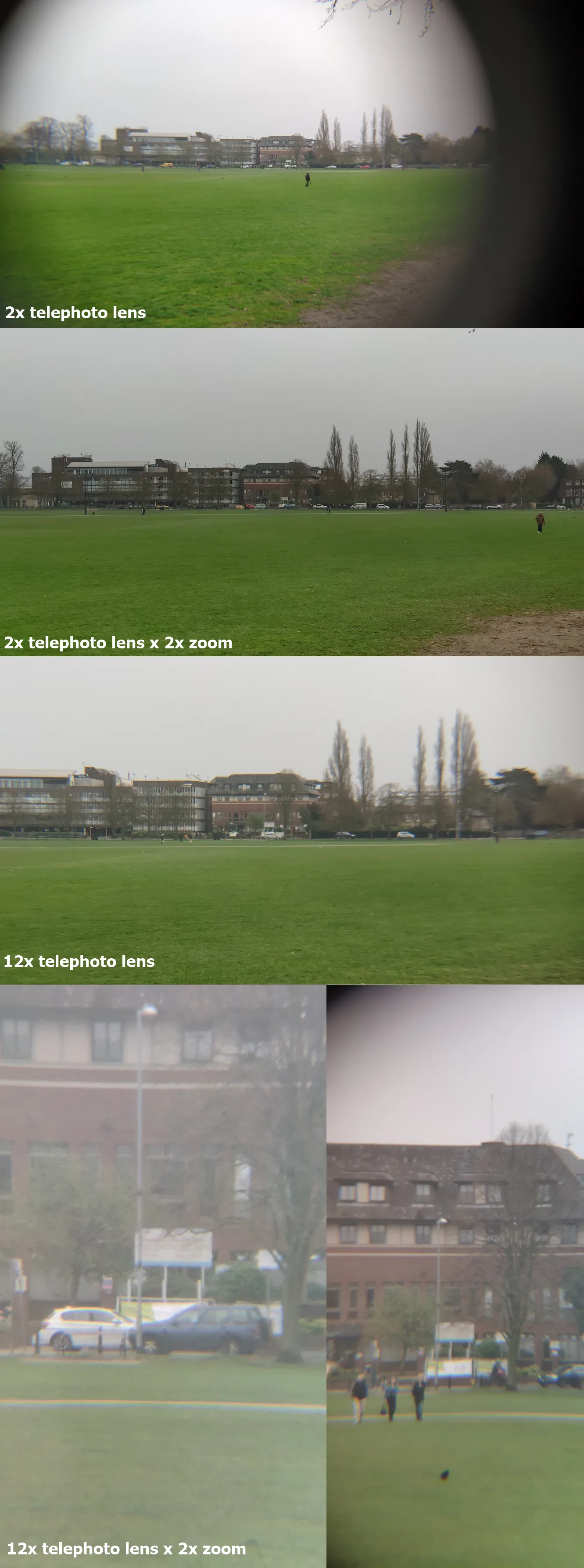
On the other way, in Mi8 we can use 2x optical zoom and multiple twice our view. The utmost zoom result will be 24x, but we must set our autofocus deliberately because it’s quite sensitive at this enlargement. When you try it enough, your pictures can be quite good in places (Pic.9, 10).
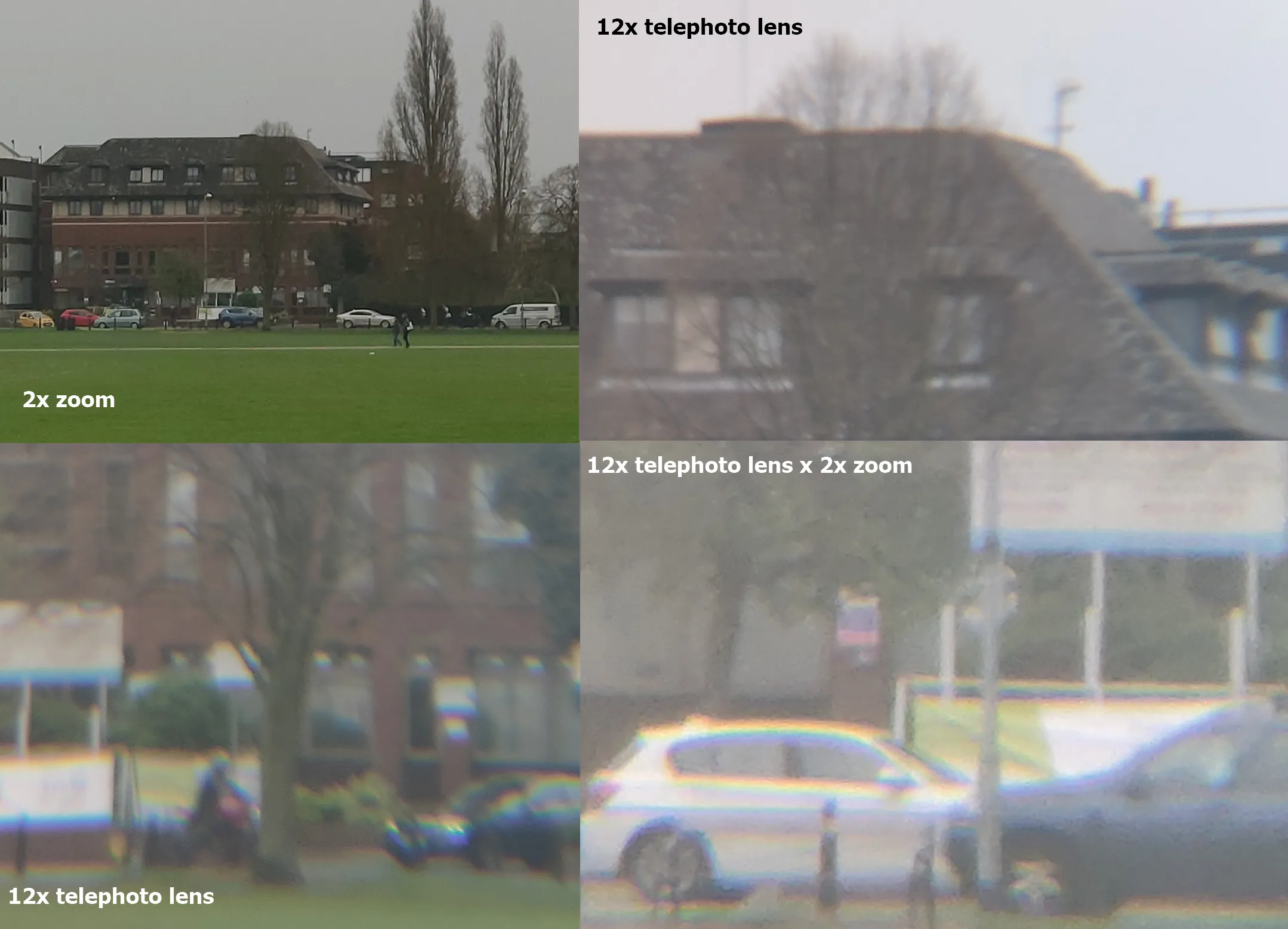
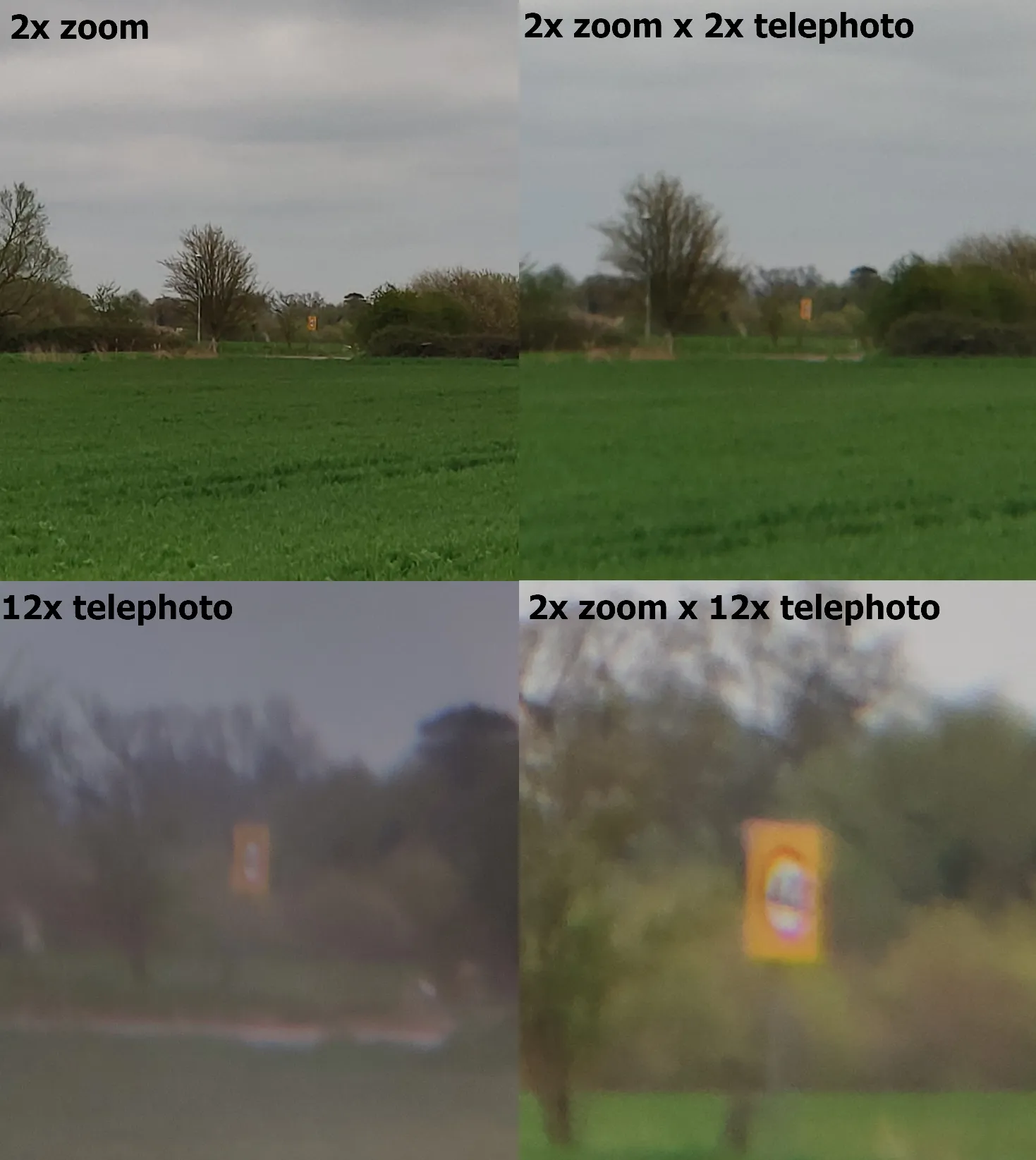
It’s good to mention also the panorama mode, which also can be adopted into the aforementioned lenses. A pivotal thing is the angular extent of the panoramic picture, which is going to be dramatically reduced as a bigger zoom we will apply.
The graph below (Pic. 12) shows the relation between the zoom factor and the angular extent of your panoramic picture. It applies to the Xiaomi Mi 9 too, which you can see later in this post. Unfortunately, the Mi 9 doesn’t feature 2x optical zoom in panorama mode, so some of the patterns aren’t applicable.

Let’s have a look at the panoramic picture in the Xiaomi Mi 8 when the telephoto lens is applied. Because Mi 8 has an option to use 2x optical zoom in the panoramic mode I show you also a double one, multiplied by another 2x provided by the small telephoto lens (Pic. 13, 14).
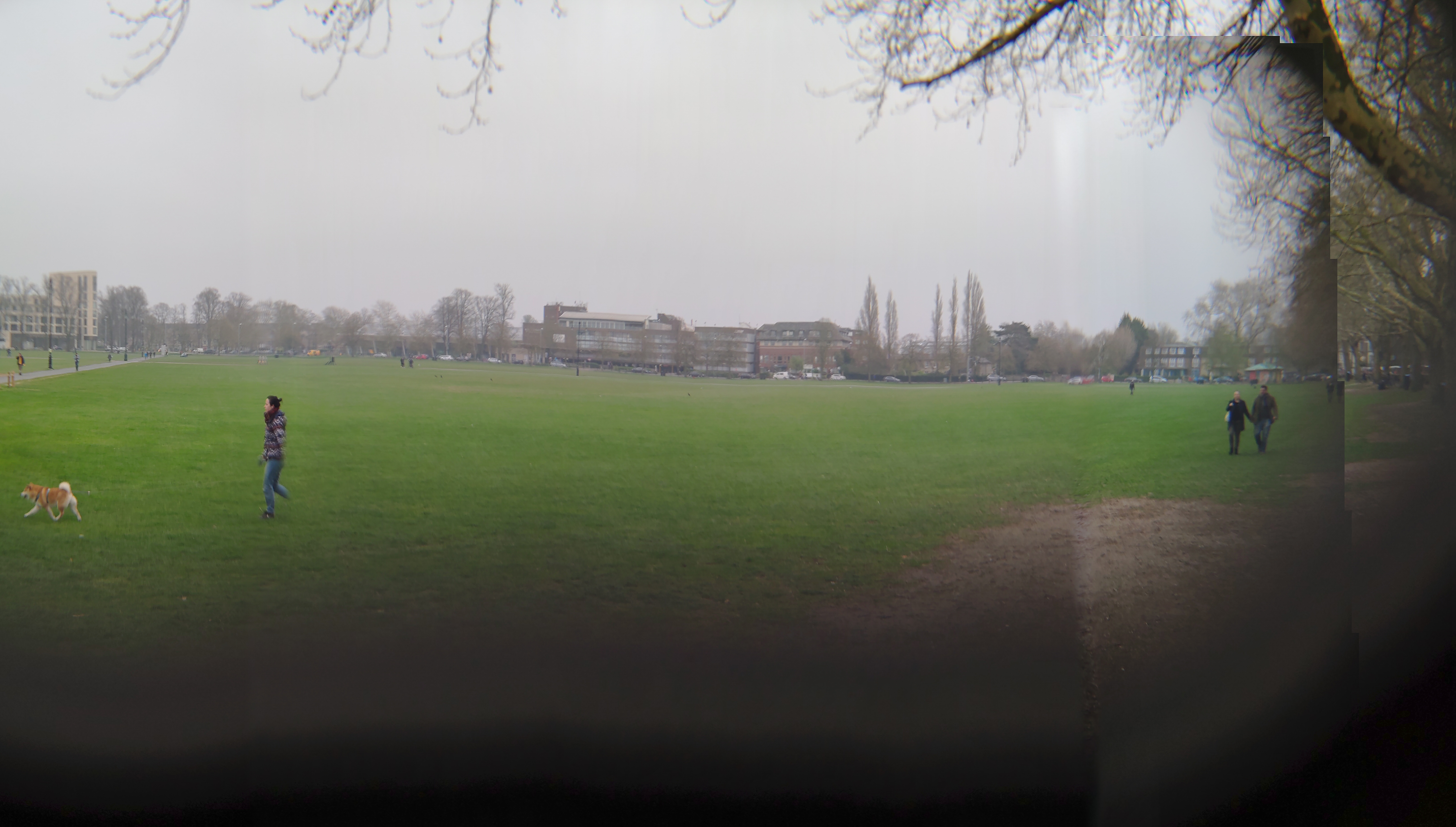
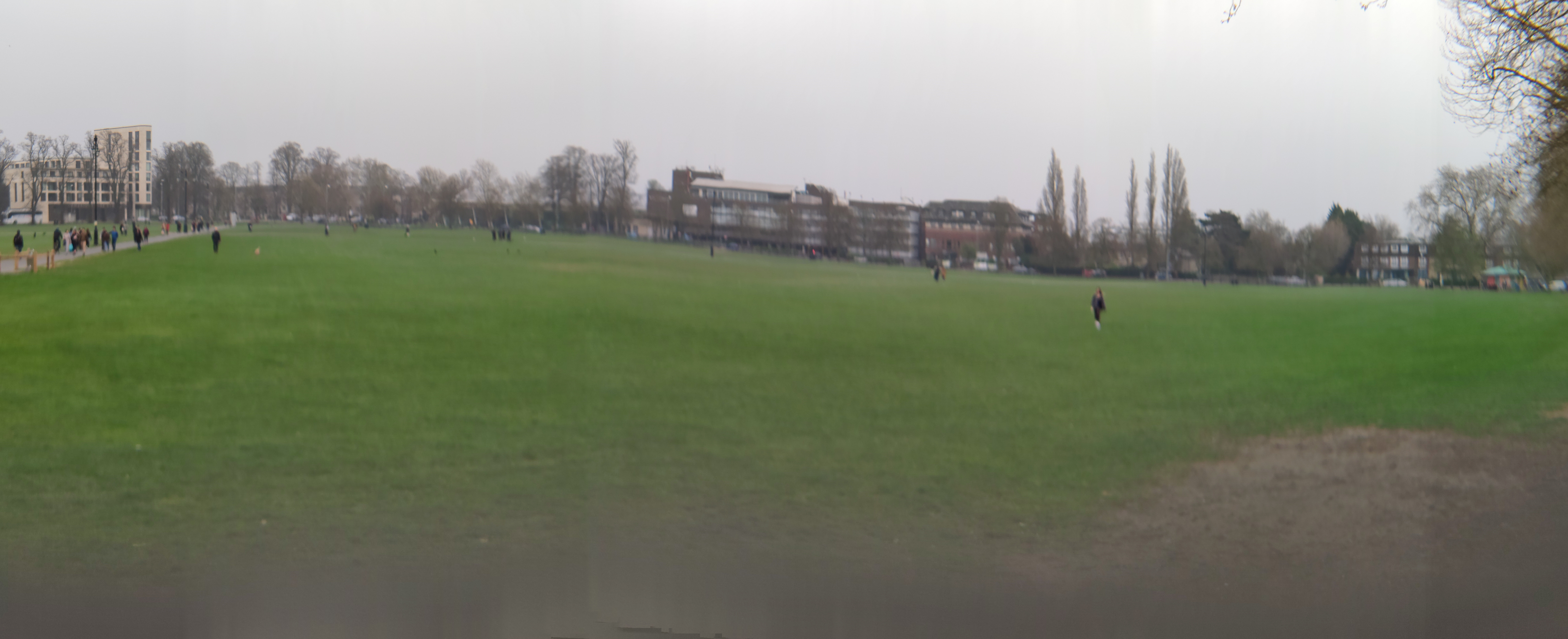
Watching these 2 images a first conclusion comes to mind – do it as slowly as possible. Another thing is to attach the lens to your phone camera properly. Otherwise, you will get an unpleasant dark area (Pic. 13) or your image won’t be sharp in places. Because I have done these panoramas very quickly, none of them is really useful. Again, a bigger zoom requires more attention in the autofocus settings.
Continuing below, let’s see the panoramas made with a 12x telephoto lens as well as 2x optical zoom multiplication (Pic. 15-17).


CELL PHONE LENS KIT WITH XIAOMI MI 9
The widest test has been carried out with the Xiaomi Mi 9 6GB 128GB (Global version), which is my own new smartphone. I tested all lenses in the following categories driven by imaging modes featured by this device. I am going to point out all of them underneath in terms of the specified lens attached to the Mi 9 smartphone.
1 – 12x telephoto lens – traditionally it goes as a first lens. It was tested alongside 2x telephoto lenses, which can be a bit more useful in Mi 9 instead of Mi 8 for two reasons implicitly. Because the Mi 9 doesn’t support 2x optical zoom for panorama mode, we can use 2x telephoto and have a bit sharper image. It applies also to 48MP mode, which has wide-angle features. Unfortunately in the 2nd case, we can’t escape from the awful dark edges seen in our image.
To get around more widely with both lenses I would like to show both crop pictures as well as a digital zoom in action.


Unfortunately, there are not many details revealed, as we can see in the example below (Pic. 20, 21). The sharpness affliction impacts the quality, making an image fuzzy, which is the best visible when we want to grab some small detail or text.
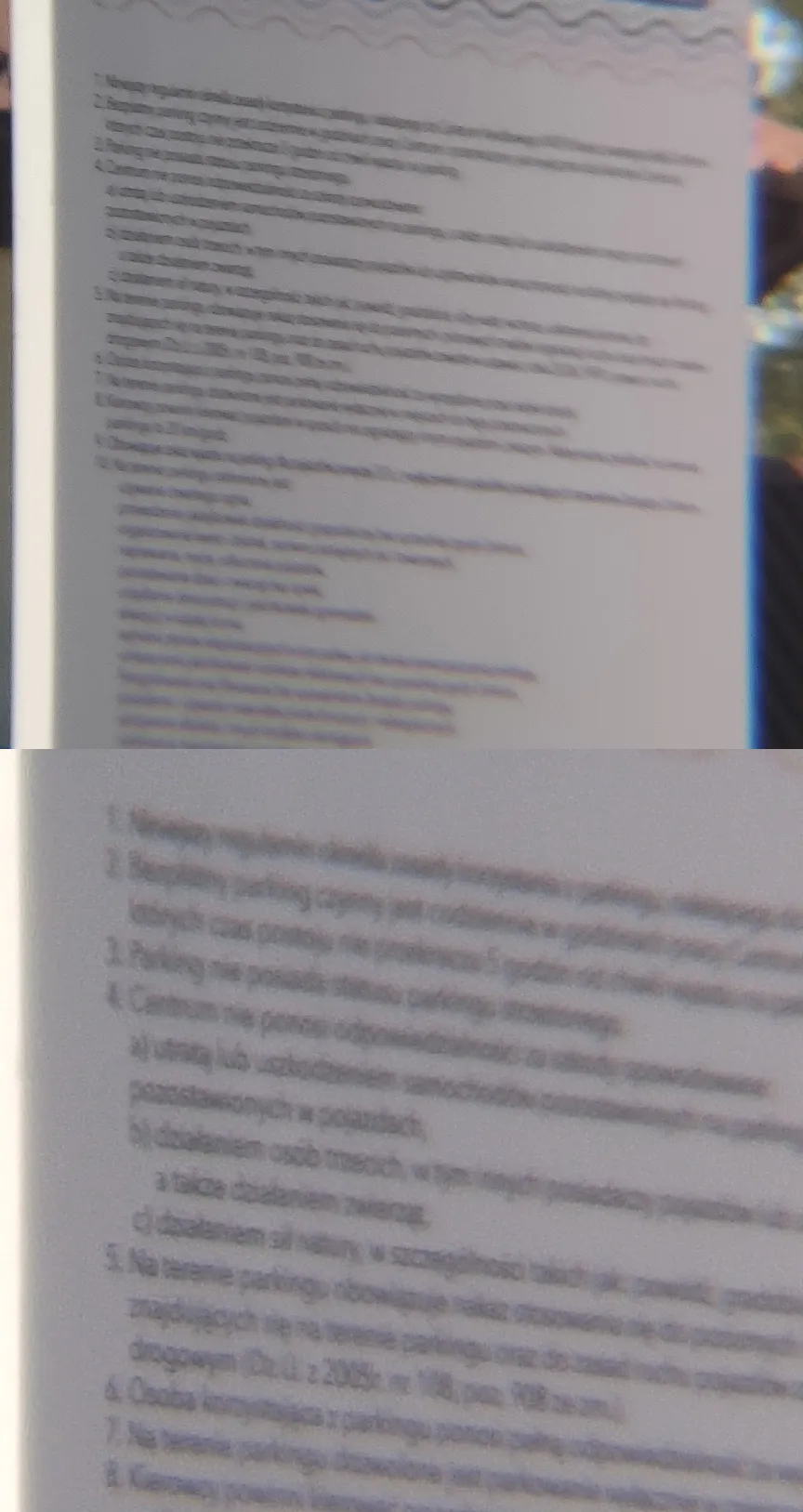
The images above expose the major disadvantage of this lens – utter lack of sharpness. It can be helpful, but not for small things.
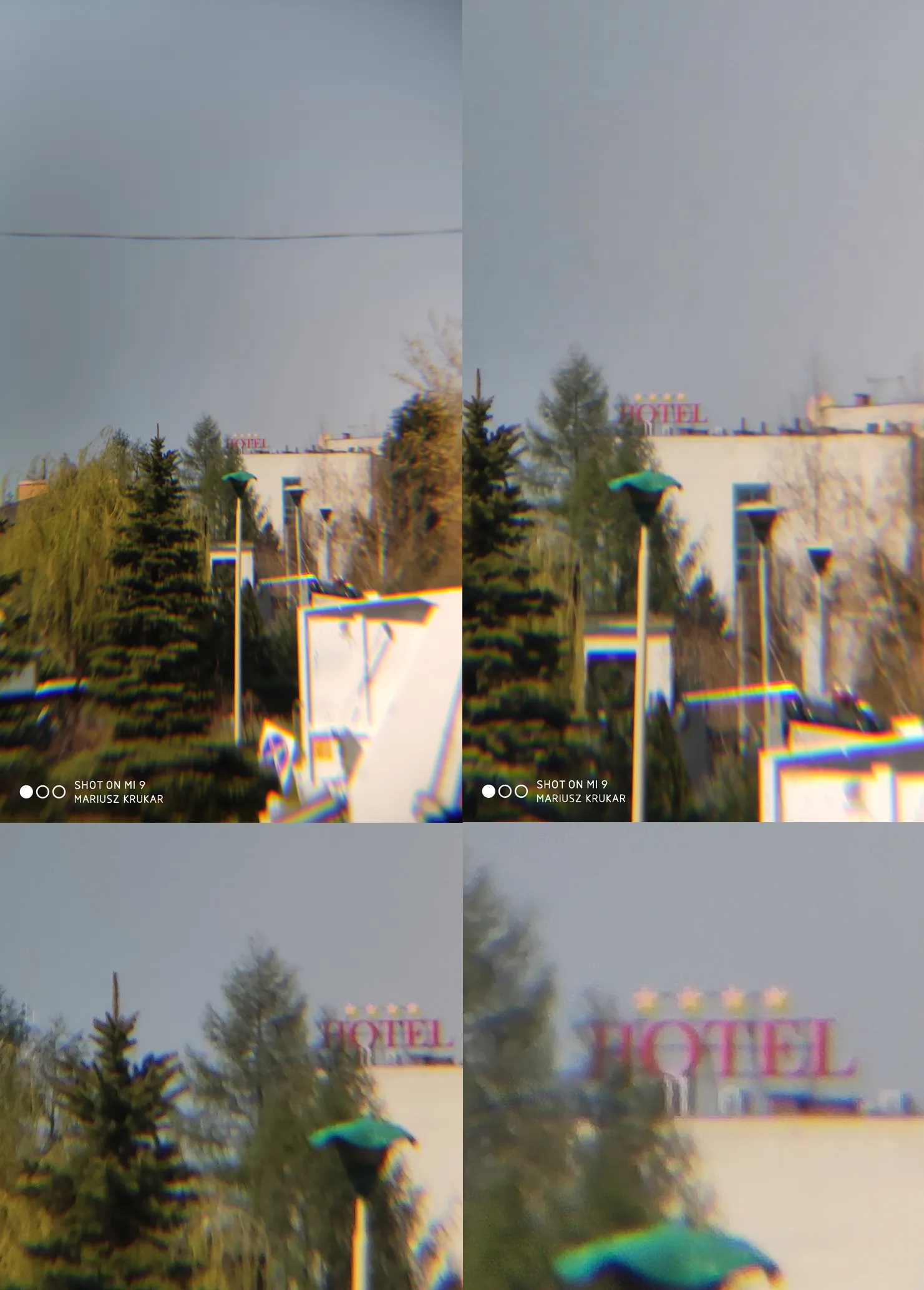
Let’s see how it looks when the digital Mi 9 Zoom is in action. Basically, pictures are much worse, which is understandable (Pic. 23-24).

It can work only for objects, that don’t feature many details such as metal crosses, tables, long roofs, etc. Capturing objects at longer distances, our vista can be merged into one blurry spot, when the object is too thin (Pic. 25).

The best quality of the 12x telephoto lens comes along with the 48MP mode (Pic. 26). A wide-angle feature of this image format covers up slightly the main demerits of this telephoto. However a considerable distortion is to be seen near the image edges likewise in the Mi 9 wide-angle mode.
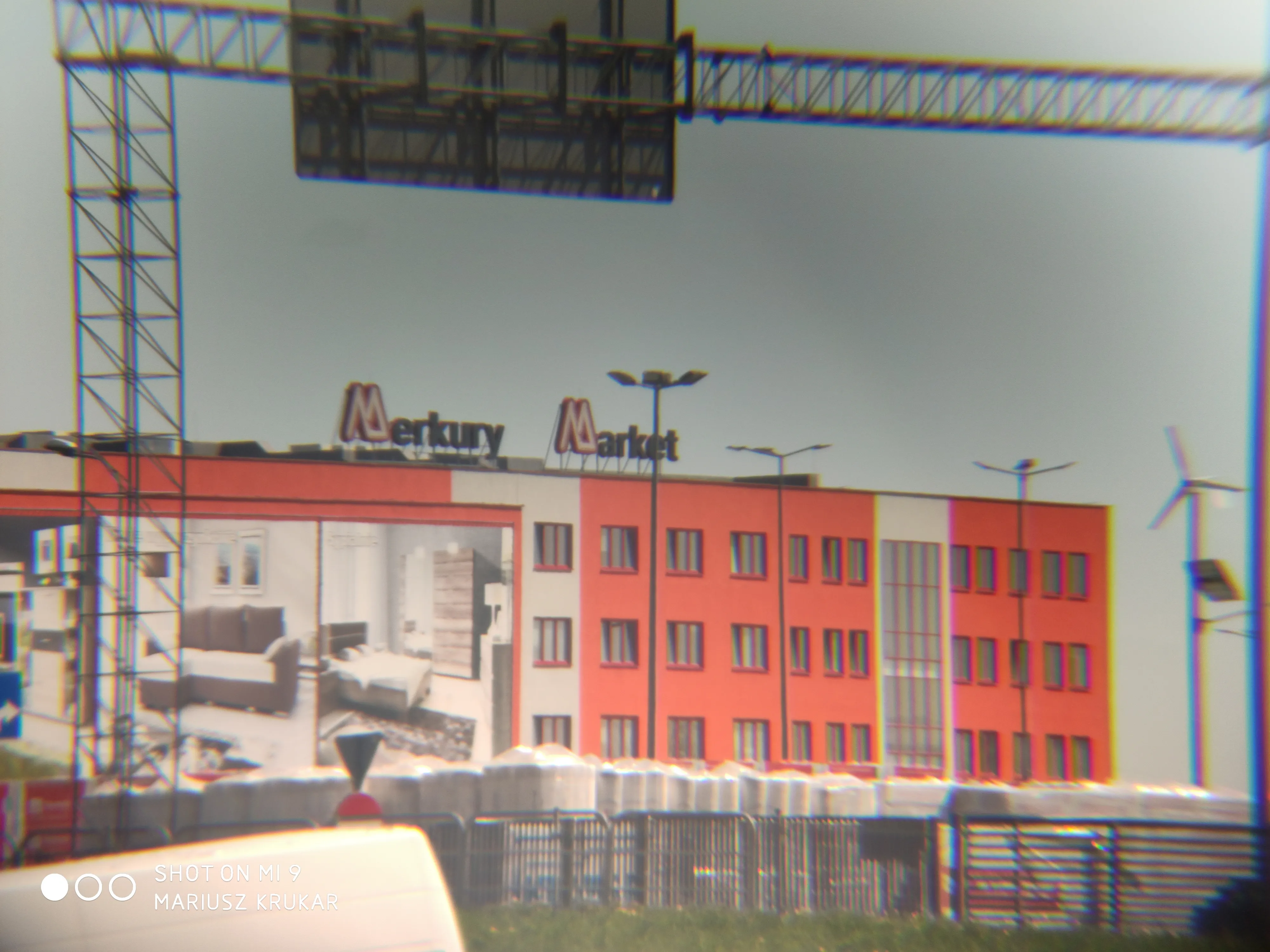
Watch the 2x telephoto lens features in the footage below:
2 – 15x macro lens – this is the lens, which I truly recommend using. The 15x zoom into the nearest objects works quite well. The image is not perfect, but decent.
First of all, let’s compare the macro view between the standard 2x offered by Mi 8 (2x optical zoom) and 15x attached with lens (Pic. 27).
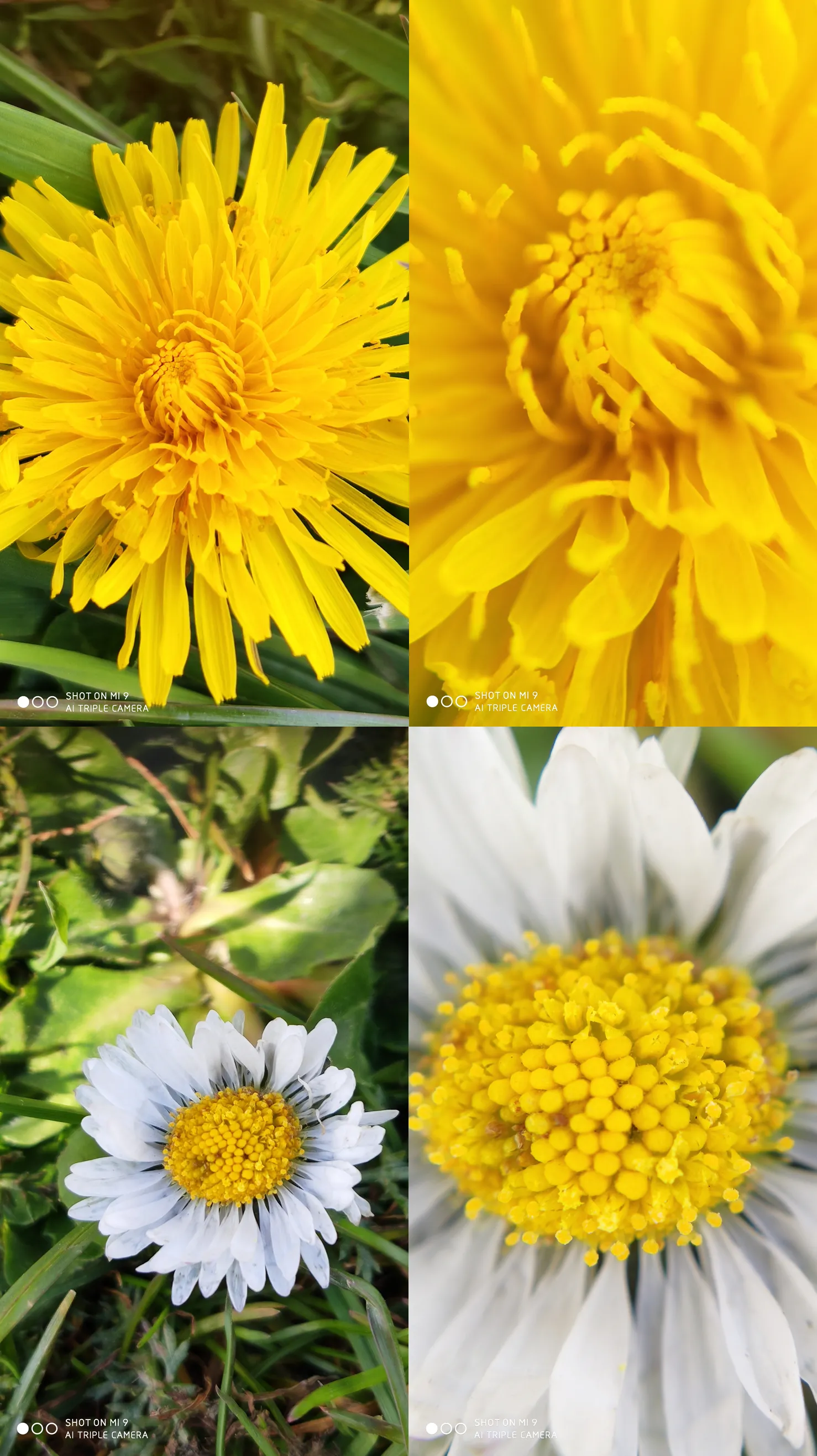
As you can see, the 15x macro lens works quite well. The major thing here is autofocus, which is hard to set, as your phone or the object is in motion. The principle here is exactly the same as in the zoom; the same amount of magnification multiplies the sensitivity. It makes it a challenge to get our picture sharp enough, especially when some of the objects move i.e. insects.
Because we can also combine our 2x zoom feature with the 15x macro lens attached, the images can be quite interesting, despite the area of sharpness being confined (Pic. 28).

Even cropped images don’t look bad (Pic. 29).
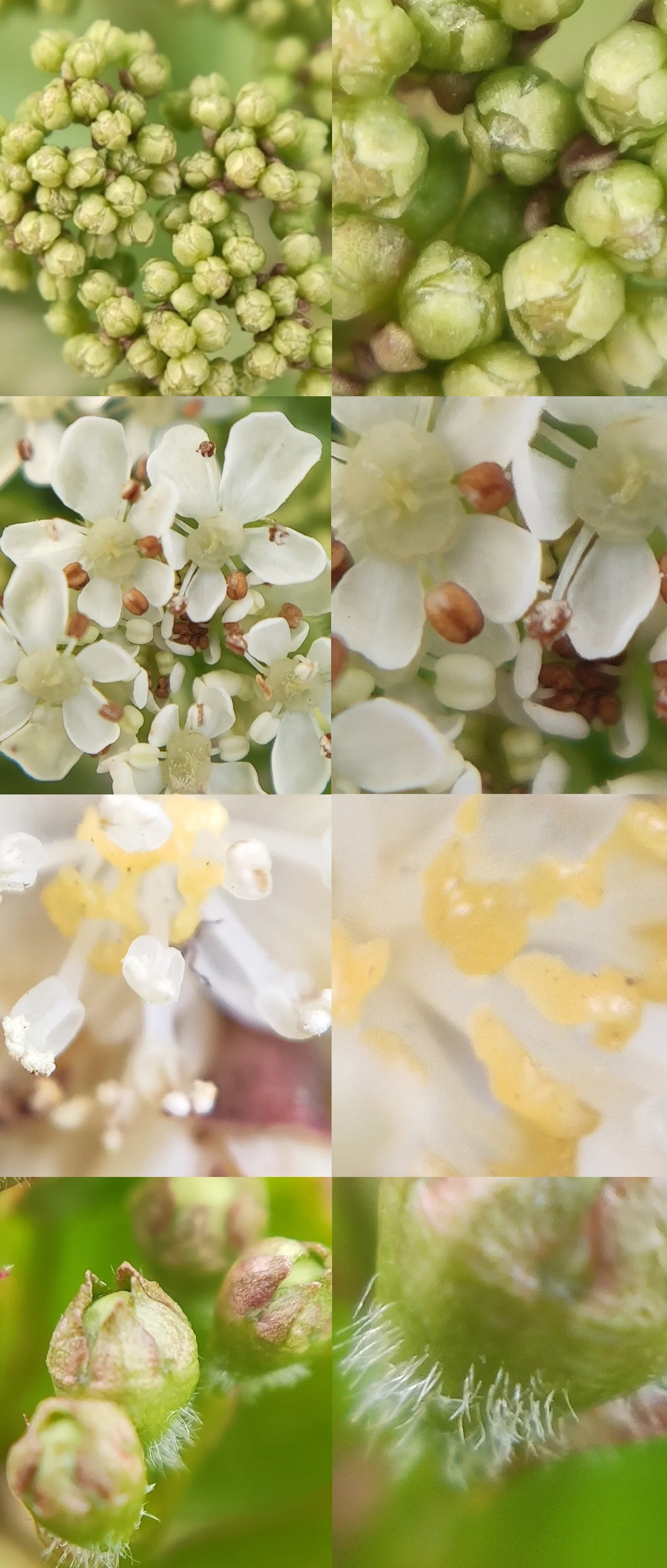
See also another example, where the elements are often in motion (Pic. 30), hence the image cropping is not necessary as the quality is deteriorated by movement.
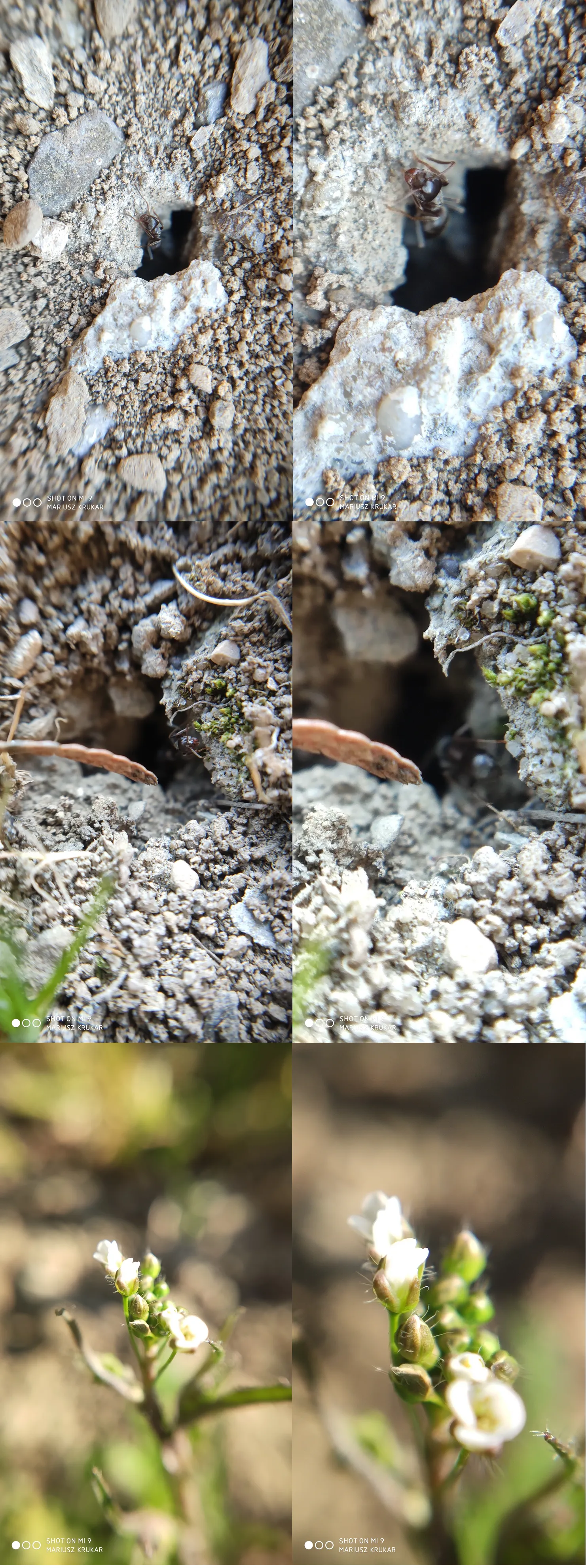
The image above reveals an important focus feature. It looks like the 15x macro lens isn’t precise enough as moves closer to the edges. The best result is to be seen when the surface is captured from the top and less seen in the case of a tilt-shift position. The last row shows a Shepherd’s Purse, a weed characteristic for pavements, cobbled surfaces, or road edges, which is often exposed to the wind. The image shows a kind of tilt-shift position, where only flower buds are sharp enough.
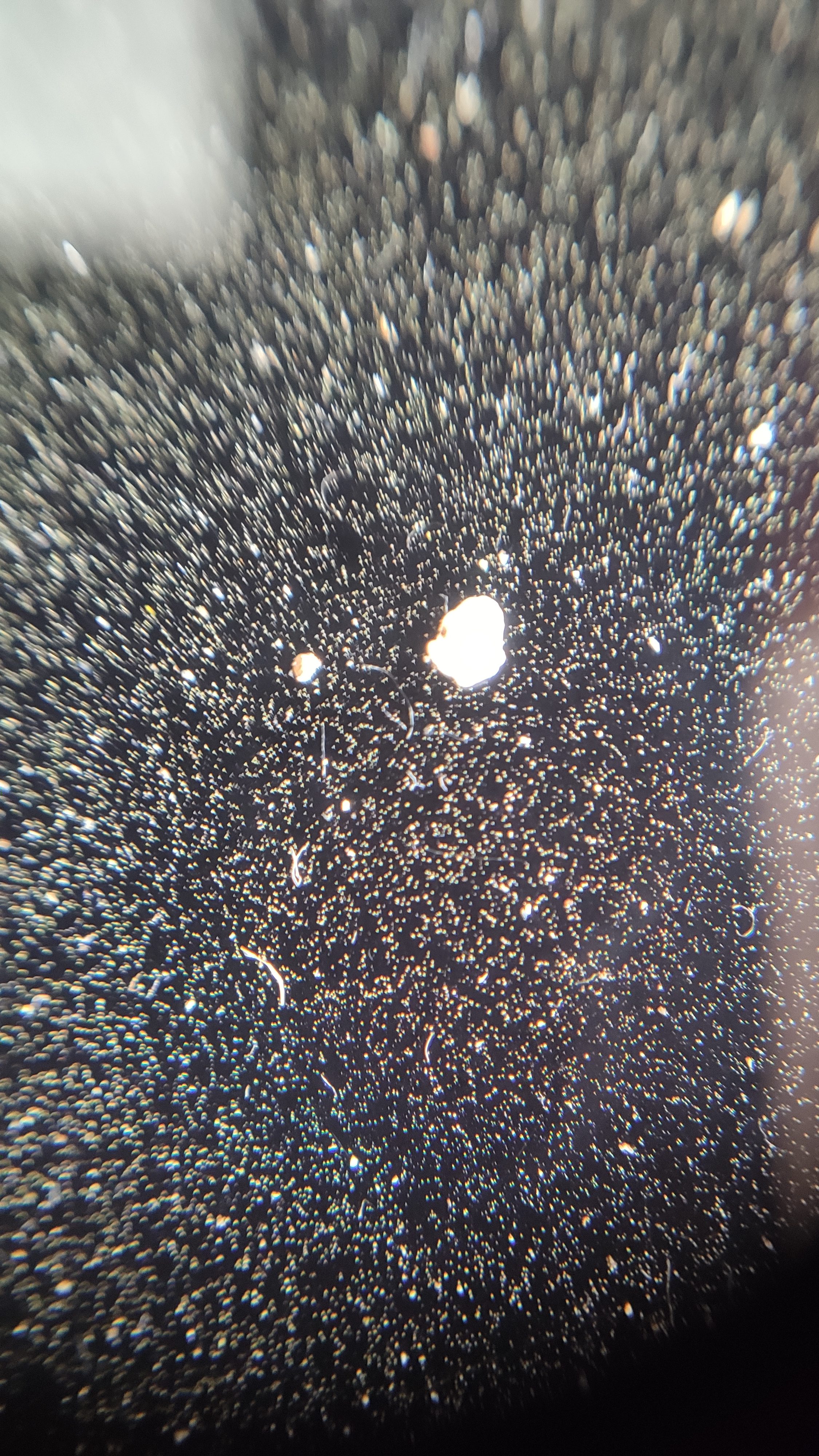
More examples are below… (Pic. 32,33).
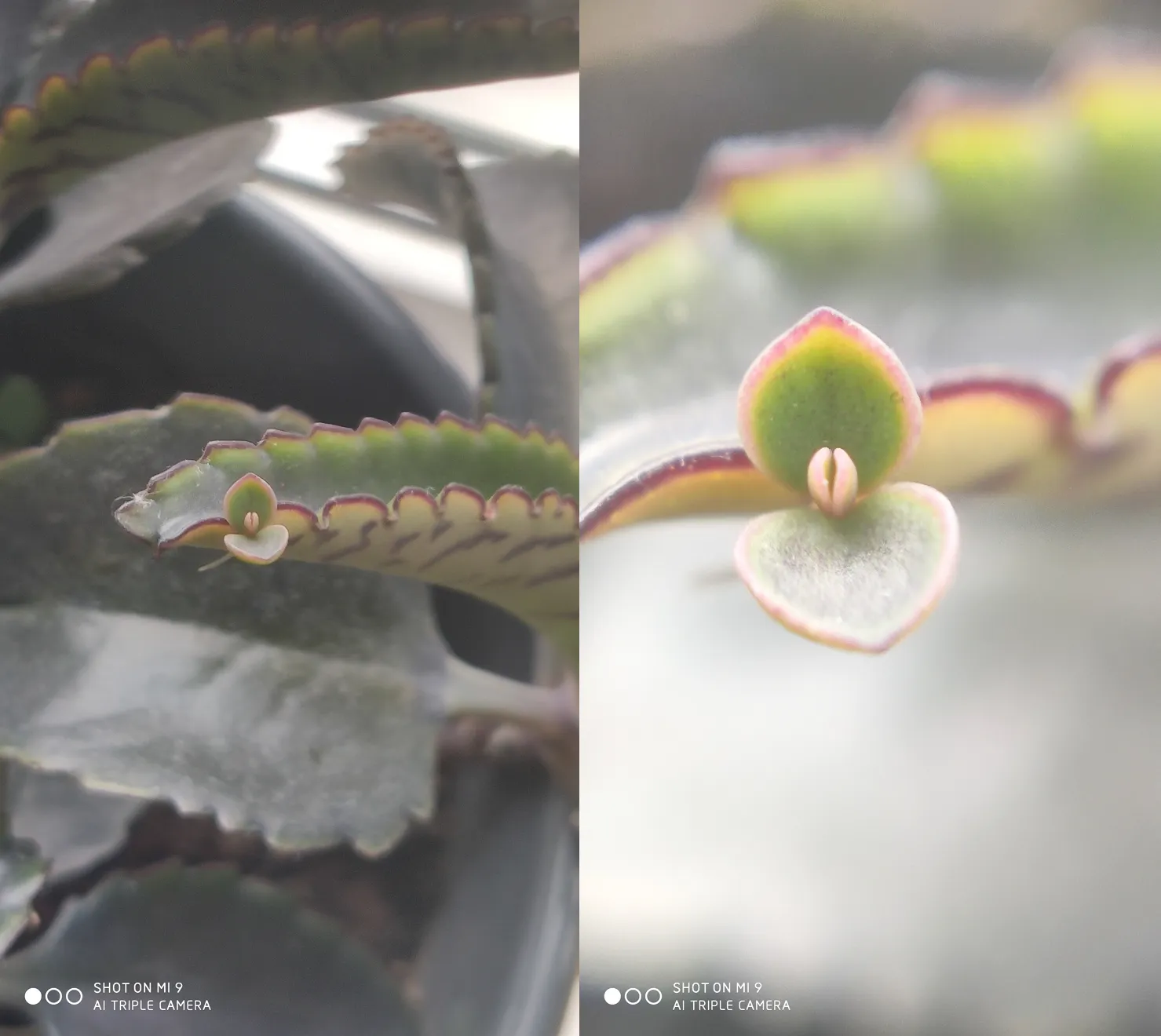
The macro photo with 48MP mode looks also good (Pic. 34). The crop is not needed here, because the 48MP mode is built by pixel interpolation.

3 – Fisheye 198° – this lens could be beneficial, although its amount is too high against the glass position. In turn, you cannot escape from the awful dark edge surrounding your image (Pic. 35-36), unless you run the 2x zoom facility. Then it can work.
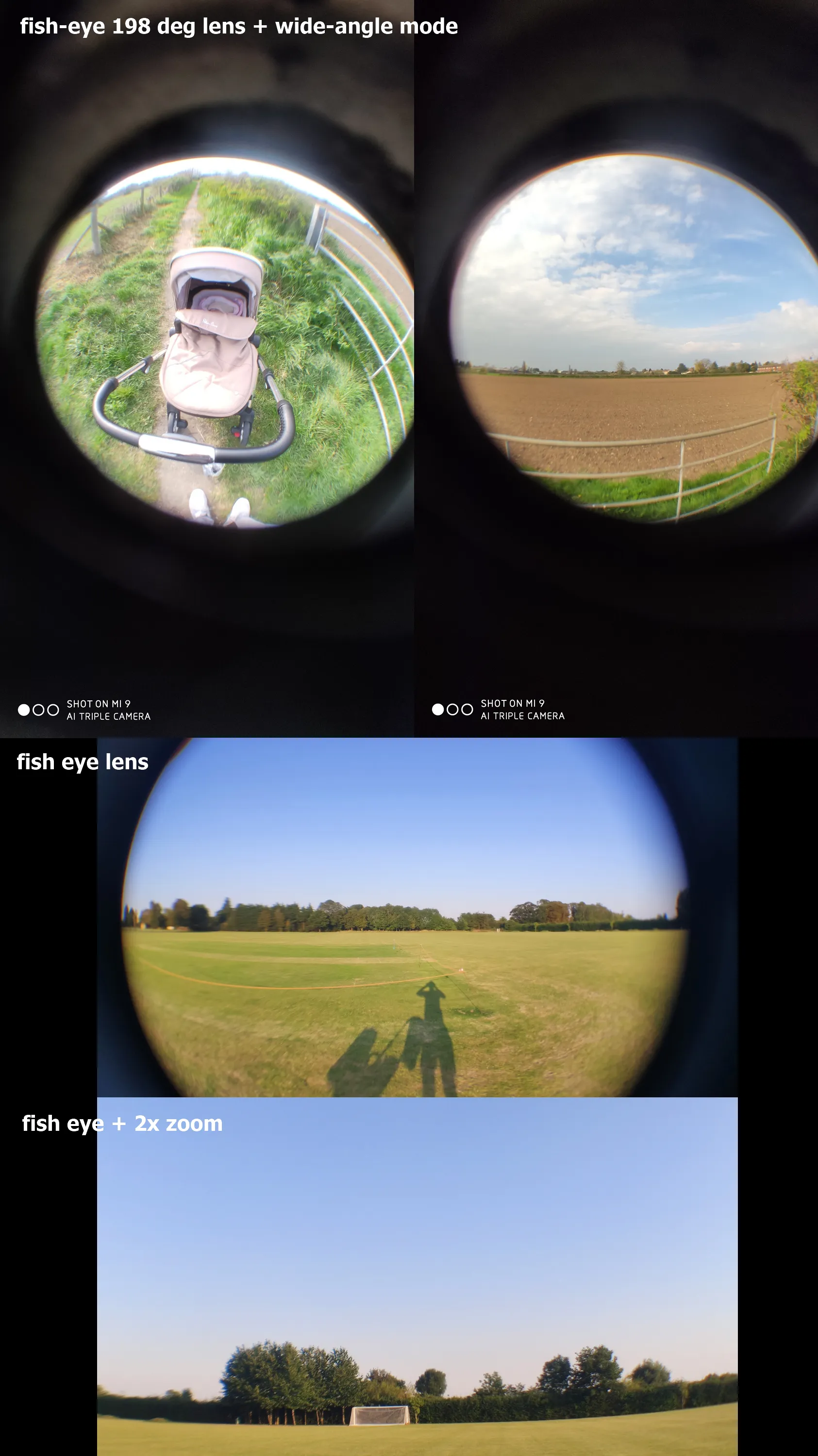
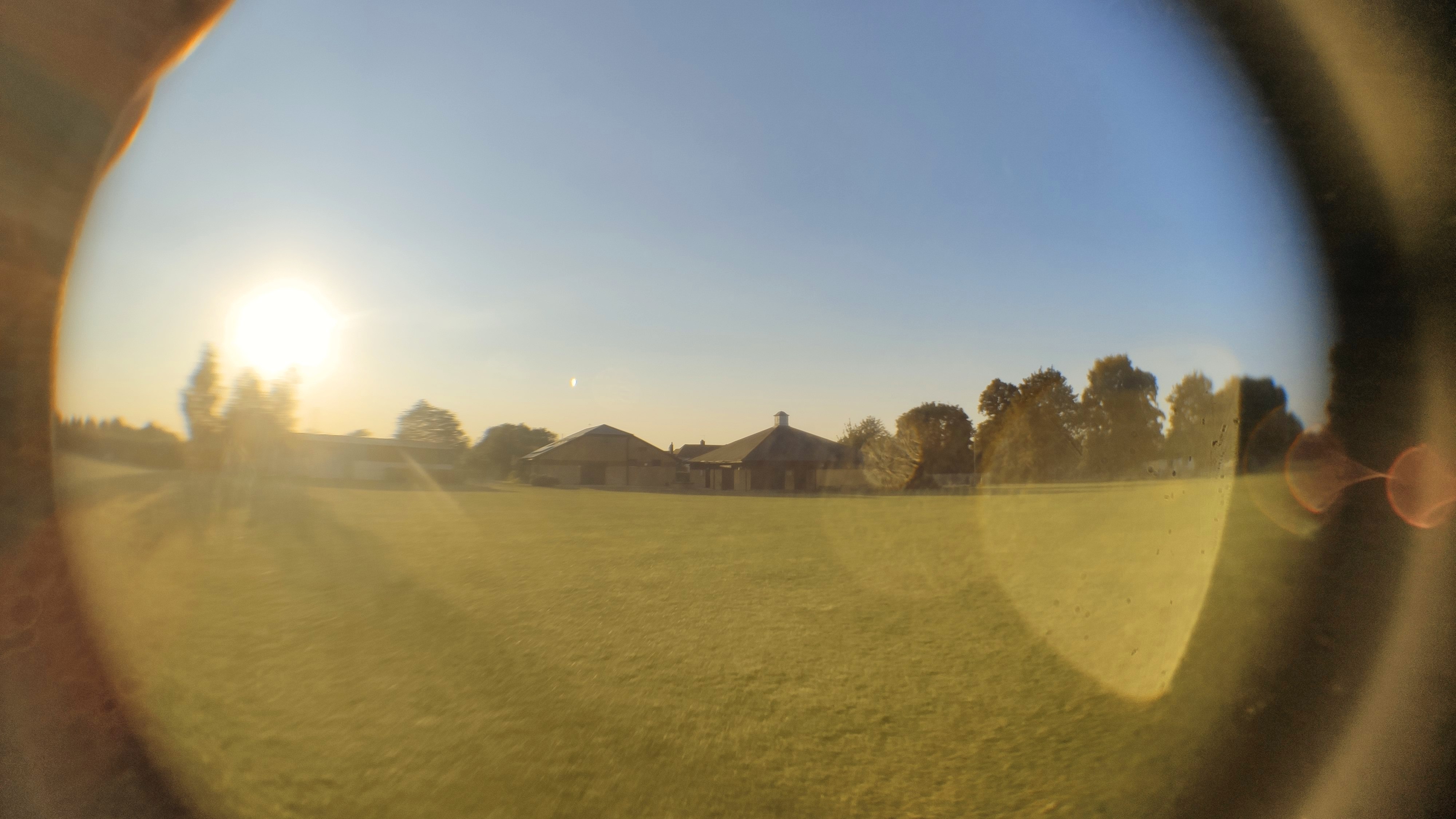
4 – A good lens to use can be 0.63x wide, which goes strictly alongside a 15x macro lens. Writing “strictly alongside” means, that you must have them both attached if you want to gain the effect. The 0.63x wide lens alone won’t be stuck into your smartphone because of the wrong thread, which matches the 15x macro lens only. This is quite awkward feature, especially, since both of them are small, and unscrewing them can be a challenge. Anyway, if you get into the grip, and mount them together into your device, the result will be a slightly wider view on your screen.
I believe, that for Xiaomi Mi 9 6GB 128GB (Global version) the 0.63x wide lens can be a good alternative for the wide-angle mode, being botched by producers, unfortunately. However, it must be used at least with normal photo mode (Pic. 34).
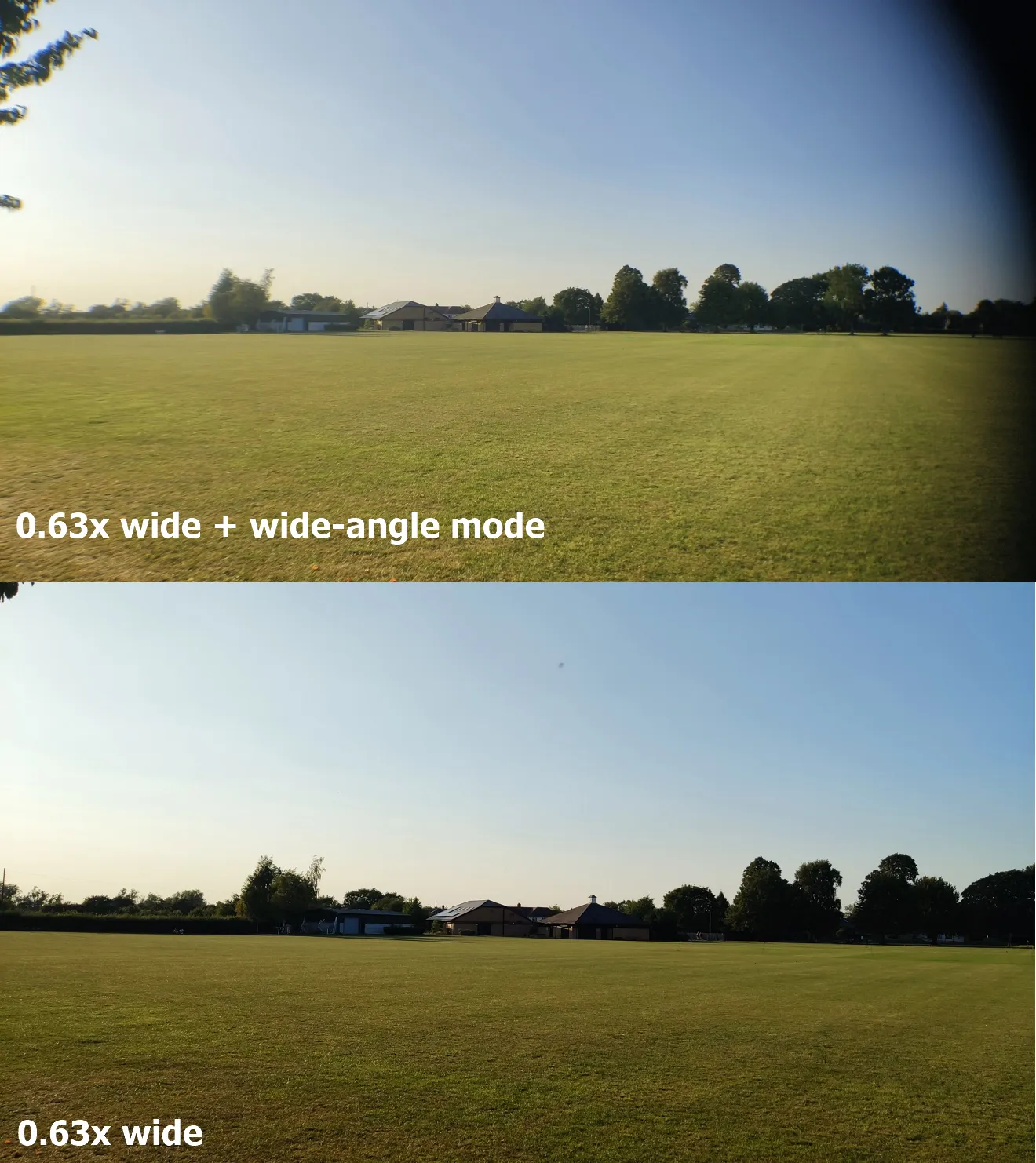
Seeing the picture above we can conclude, that combining this lens with normal photo mode gives a better image than the wide-angle mode provided. On the other hand, using this lens with the wide-angle mode can deteriorate the effect considerably. Look at the upper image, where we have both distortions caused by poor wide-angle effect as well as the dark edge of the lens mount, covered by this glass.
5 – The last kind of lens, which I tested was the kaleidoscope lens. There is no opinion about the quality as it brings a completely different image character (Pic. 38, 39). The major demerit, which is the dark edge caused by the lens mount won’t disappear unless you turn into 2x zoom (Pic. 40).


MAGNIFIER APPS VERSUS THE CELL PHONE LENS
In the last section of this work, I would like to point out, that there is a multitude of “Magnifier” apps available for Android. I had an occasion to install two of them – the best-rated, in order to compare their quality to the cell phone lens quality. I took into account only zoom and macro, which are the most often used by myself.

I can admit, that the best of them is the Magnifying Glass app at the bottom of the picture. This brand-new app triggers your digital zoom properly, giving you a quicker way to achieve enlargement.
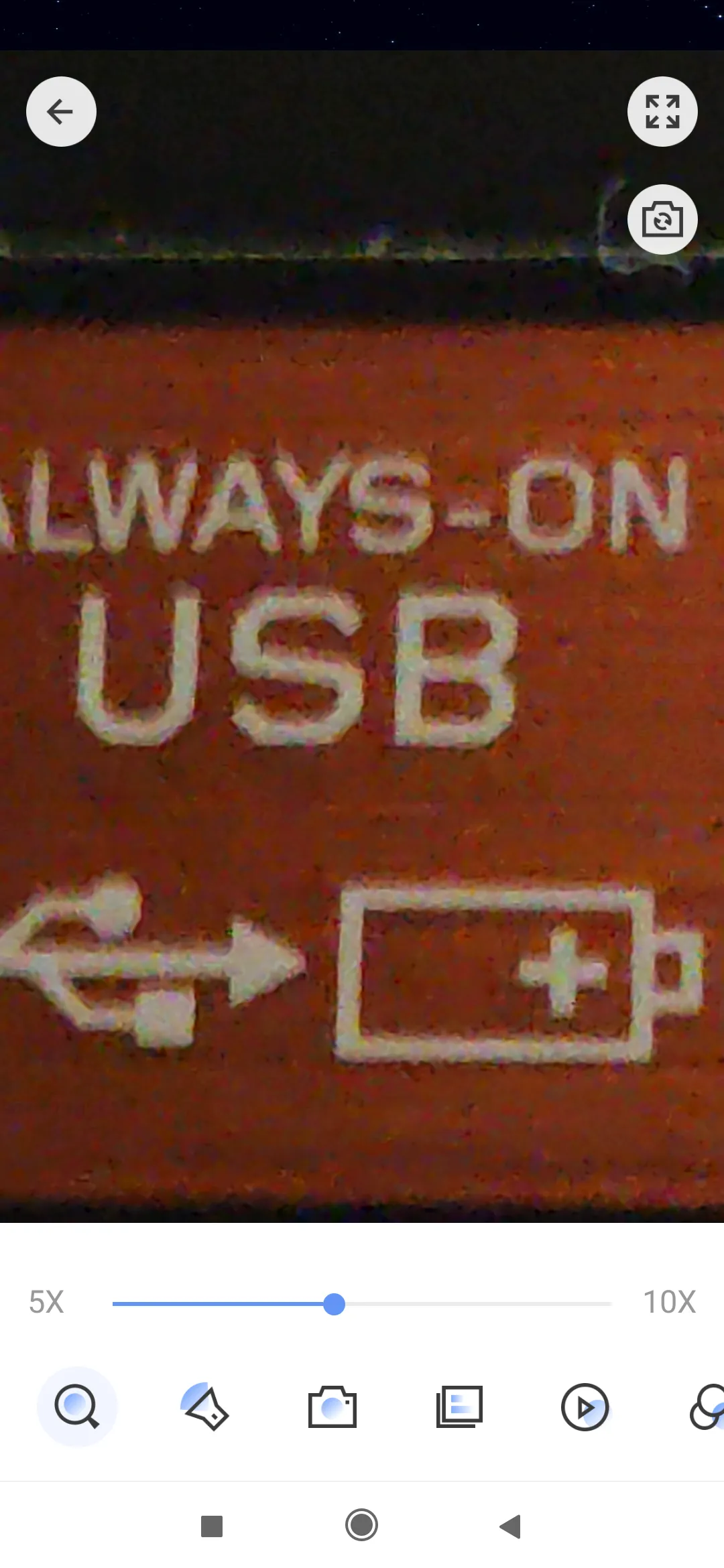
But the images are still noisy, according to the Mi 9 zoom properties (Pic. 43, 44). The image quality can vary depending on your smartphone I believe.

Another two apps are doing much worse. They invoke the device zoom mistakingly, making the images basically out of question (Pic. 47, 48). Image capturing is not needed as the quality is shown yet in the preview mode (Pic. 45, 46).
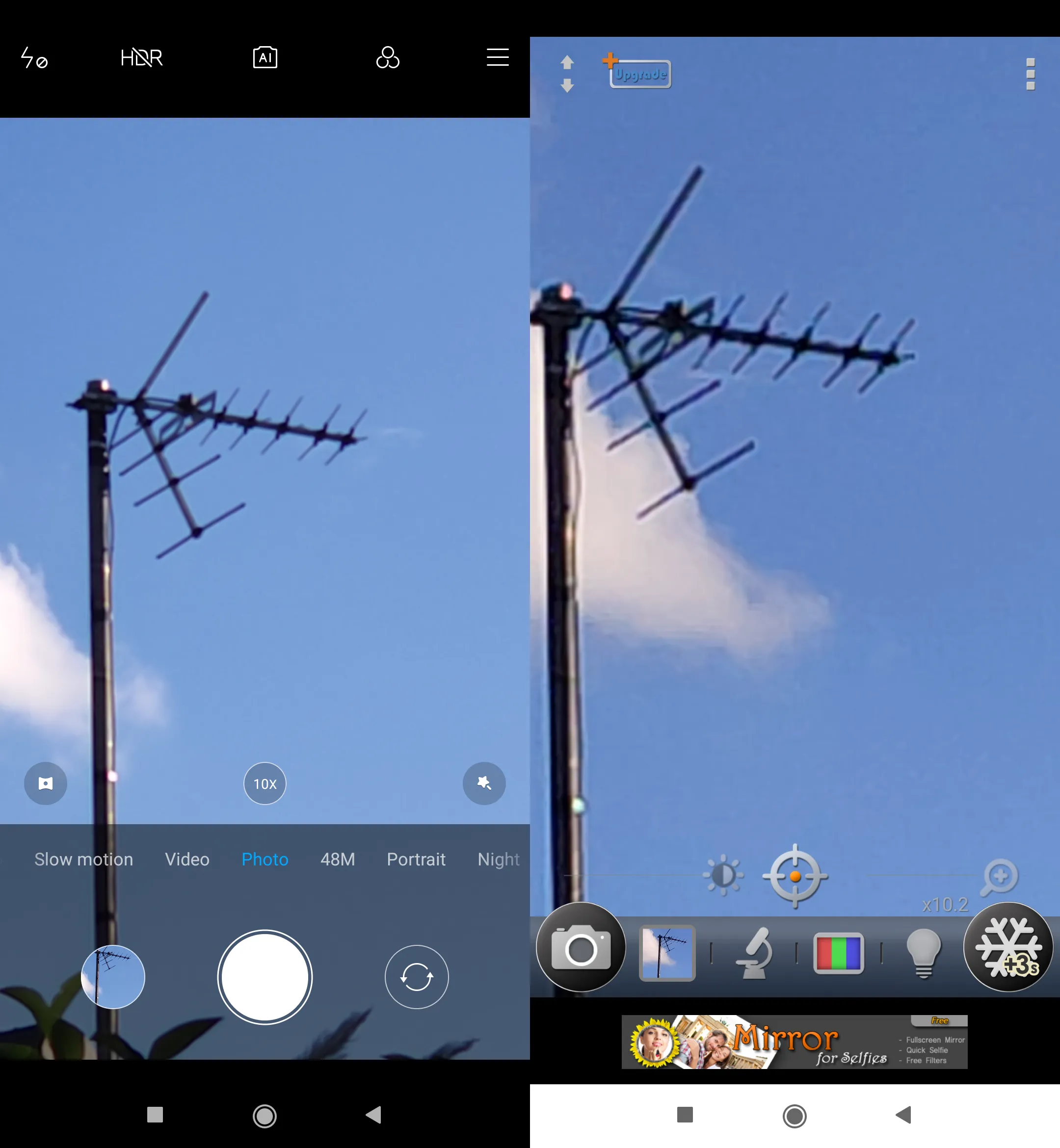

In another magnifying glass app (Cozy Magnifier) the situation is not better, to be honest (Pic. 47). Both macro and zoom are not acceptable, as the digital zoom from your device is activated falsely.

Let’s have a look at the relationship with the 12x telephoto lens (Pic. 48).

In fact, the zoom difference is slight in the apps (10x), but their quality is unacceptable. The image given by the 12x telephoto lens attached is far better, although even here there is a lot for an upgrade in the future.
CONCLUSIONS
There is no cheap option for getting your cell phone view better, as offered by the producer, unfortunately. Despite a wide choice of kit lenses, available literally for a song, the view they offer is poor. In the case of my example, I believe, that you can buy the set including macro only, without additional lenses, which are basically rubbish. I bought this kit as a trial, however, I wish I could spend more money and purchase something for 100GBP instead of 25GBP only. To be honest, there is at least 50% of the cell phone kit lens available for this small price. It means, that none of them are good enough. I hope, that this test will help you with better consideration of a purchase like this. Besides the poor kit phone lens, an option with Android apps is also not good enough. It’s even worse I would say, although at least you don’t pay anything. Some of these apps feature the “Pro” version, but I believe, that they’re not worthy and moreover cost more, than this single kit lens.
I will probably use this kit lens, but not often and on an emergency basis, for instance when my camera will run out of battery. Probably, the macro lens will be used often, due to relatively the best quality.
Sad to say at the very end, that this budget purchasing wasn’t a good idea, but…every day is a school day 🙂
Mariusz Krukar
Links:
1. Bostionye cell phone kit lens at Amazon
2. Cell phone kit lens at Amazon
3. Best lenses for iPhone and Android
Youtube:




